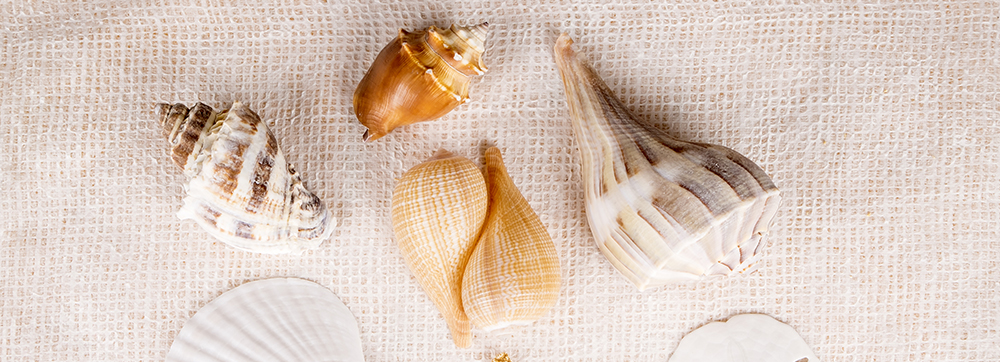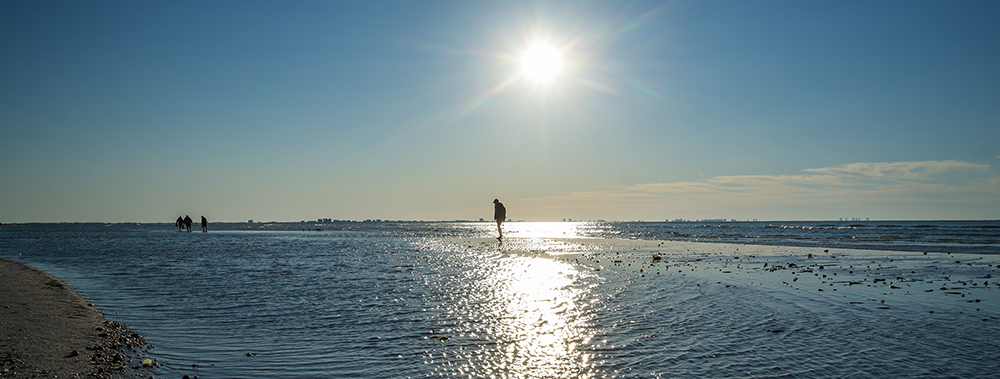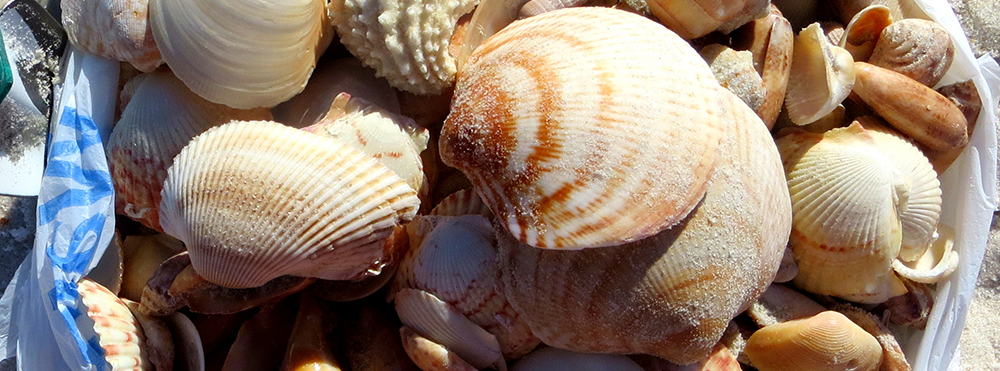You don’t need to be an expert or a scientist to enjoy shelling, but knowing what (and occasionally who) you’re picking up from the ocean and our sandy beaches can make it an even more rewarding experience. Get to know a few shell facts, our local shells on Sanibel Island, how to clean your collection, and more!
Shell Facts
Seashells are created by mollusks, soft-bodied animals without backbones. The shells are their exoskeletons and act as protection from predators. As the mollusk grows, shells can’t expand, so the shell too must grow from the bottom up. Mollusks secrete proteins and minerals to build out and add onto their shell.
Seashells are mostly made of calcium and come in two major varieties, gastropods and bivalves. Gastropods have a single shell and include conchs and whelks. Bivalves have a single shell as well, but the single shell consists of two hinged parts known as valves. Clams, cockles, and scallops are examples of bivalves.
Have you noticed shells with little holes in them? These can be from predators drilling into the shells or chipping them.
Now that you know where they come from, let’s get into the fun part.

What shells can you find on Sanibel Island?
To say you can find a few different types of shells on Sanibel is an understatement. Sanibel Island is home to approximately 250 shell species, but there are a few shells that you are most likely to see. In 2012, Susan J. Hewitt actually did a complete study to determine the most common shells on the island.
Hewitt’s research found that the most common shells are:
- Transverse & Ponderous Ark - commonly known as little white clam shells.
- Cross-barred Venus
- Kittens Paw - appropriately named as they look like kitten paws.
- Coquina
- Jingle - named for the sound that is made when several shells are strung together as a chime and when waves beat down upon beaches strewn with these shells.
If not the most common, a few of our favorite shells to find include Conch, Tulip, Cone, Murex, and Whelk shells. These shells can be colorful and difficult to find unbroken!
Need help identifying shells? The Bailey-Matthews Shell Museum has photos identifying local Southwest Florida shells!

When and Where to Shell on Sanibel
The best shelling on Sanibel and Captiva usually happens an hour before to an hour after low tide, with morning low tides being a bit more fruitful than afternoon low tides. Most mollusks tend to be nocturnal and feed at night, meaning more shells are ready to be found come morning.
Thanks to the moon’s gravitational forces, full moons and new moons can be a fun and exciting time to shell. After storms or northwest winds can also be a good time to assume the Sanibel Stoop, since the storms can stir up the ocean floor and shells.
As for where to shell, there really isn't a bad place to look for shells on the island, but Blind Pass, Turner Beach, and Lighthouse Beach are all great options!

How to Clean Your Shells
To clean: Rinse sand, debris, and salt from the shells with fresh water and then soak them overnight in a solution of half water, half bleach. For shiny shells, soak them in water overnight - bleach would remove their glassy finish. In the morning, scrub shells with a brush. You can use a curved wire brush to clean spiral shells and a dental pick for extra cleaning.
To bring out their colors: Soak a cotton ball in mineral oil, rub it over the shell, and let it sit. Remove excess with a dry cotton ball.
Sanibel Shelling Rules
There is no live shelling in Lee County, and this rule extends to sand dollars, sea urchins, and sea stars. If you find a shell with an inhabitant inside of it, that is considered a live shell. Even if the mollusk doesn’t seem alive, that shell is still considered to be a “live shell”.
From May 1 to November 1, artificial outdoor lighting, including flashlights, is banned during sea turtle nesting season. The artificial light disorients the baby Loggerhead and green turtles away from making their journey from the shore to the ocean.
Visit the City of Sanibel's Shelling Regulations for more information.
Now, get to shelling!
Plan Your Sanibel Island Vacation
Shelling is one of the most iconic activities along Sanibel and Captiva Islands. If you're reading to spend your days on the beach, book your Sanibel Island vacation rental today. Contact us today for more information, or sign up for our monthly newsletter to stay up to date on news, special offers, and more.

